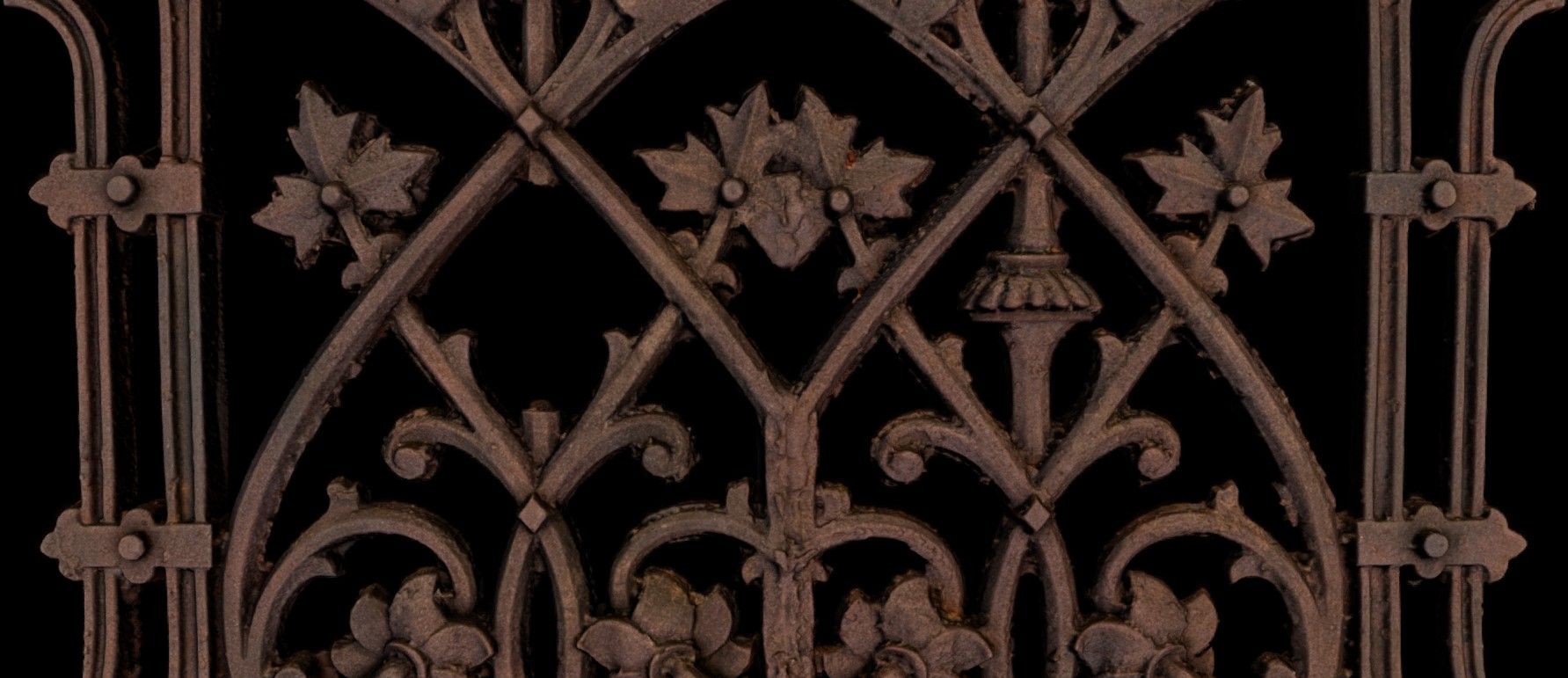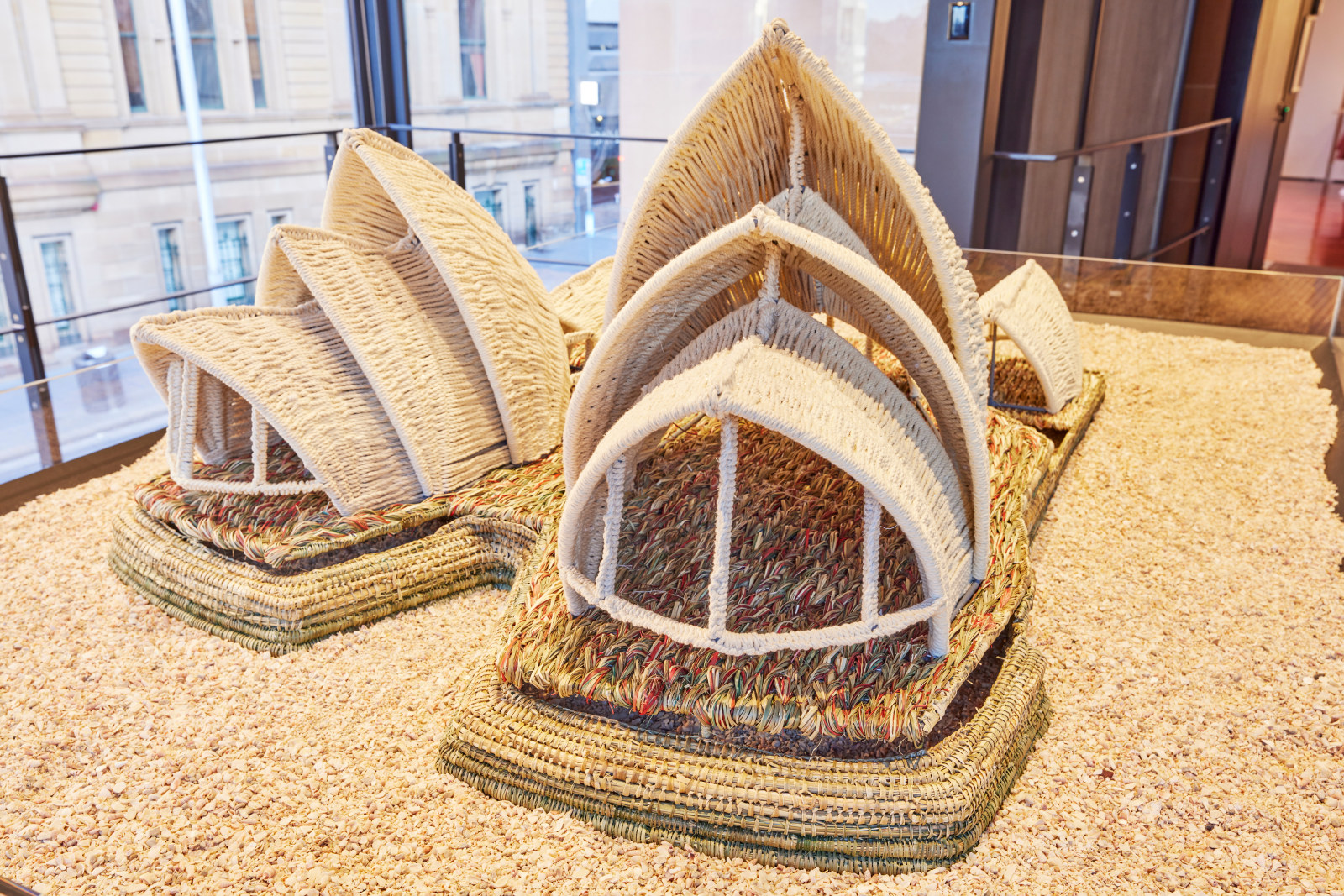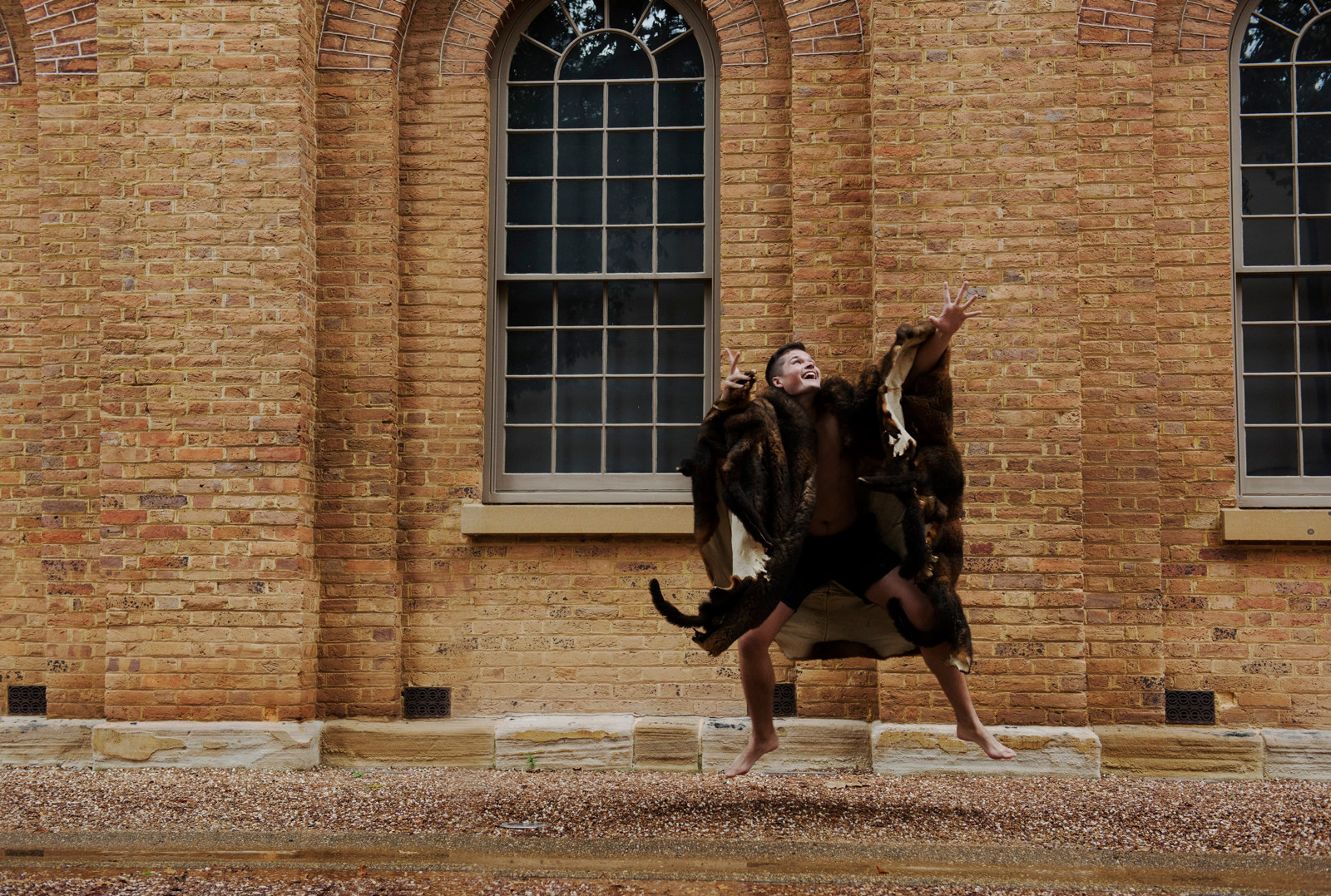Healing land, remembering Country
Healing land, remembering Country is a powerful work by Kuku Yalanji artist Tony Albert, at Elizabeth Farm.
Previously displayed on Cockatoo Island as part of the Biennale of Sydney, the wooden ‘greenhouse nursery’ is 4 metres high and 8 metres in diameter, and contains woven baskets made by artists from Bula’bula Arts, Gapuwiyak Culture and Arts, Numbulwar Numburindi Arts and Tjanpi Desert Weavers in Central Australia, and native plants supplied by the Muru Mittigar nursery.
Albert describes Healing land, remembering Country as a project ‘full of love and reflection’. It expands on a work that he created in 2018 at the site of the former Blacktown Native Institution where he collaborated with local children to reimagine the lives of those of a similar age who had been placed there nearly 200 years ago. They gifted messages on paper embedded with local plant seeds that eventually degraded into the soil to regenerate. This ‘memory exchange’ was a symbolic gesture of intergenerational healing at a site of trauma to Aboriginal people. Healing land, remembering Country similarly invites the public to engage with the complex histories of place and sites of trauma.
In presenting the work at Elizabeth Farm, Museums of History NSW acknowledges the role that Parramatta – the first site of the Native Institution (1814–20) – and the institution’s governing committee had in the systemic institutionalisation and control of Aboriginal people, the impacts of which continue today. One of the members of the committee was Hannibal Macarthur, nephew of John Macarthur, owner of Elizabeth Farm.
Healing land, remembering Country was unveiled at Elizabeth Farm for our NAIDOC Week event on Saturday 14 November 2020.
Elizabeth Farm
70 Alice Street, Rosehill NSW 2142. Phone +61 2 9635 9488- Wheelchair accessible
Display
Related
Browse all
Cast in cast out: recasting fragments of memory
An in-depth look at Dennis Golding's experiences and childhood memories of growing up in ‘The Block’

First Nations
Day of Mourning
January 26 has long been a day of debate and civic action. Those who celebrate may be surprised of the date’s significance in NSW as a protest to the celebrations of the anniversary of the arrival of the First Fleet on what was then “Anniversary Day” in NSW

First Nations
How to weave an opera house
Inspired by a stunning shellworked model of the Sydney Opera House by Bidjigal artist Esme Timbery, First Nations curator Tess Allas commissioned a woven model of the iconic building from master weavers Steven Russell and Phyllis Stewart

Cutter and Coota: a children’s play by Bruce Pascoe
Meet author and historian Bruce Pascoe and the main characters from his play Cutter and Coota as they reflect on the play’s themes and the experience of performing at the Hyde Park Barracks